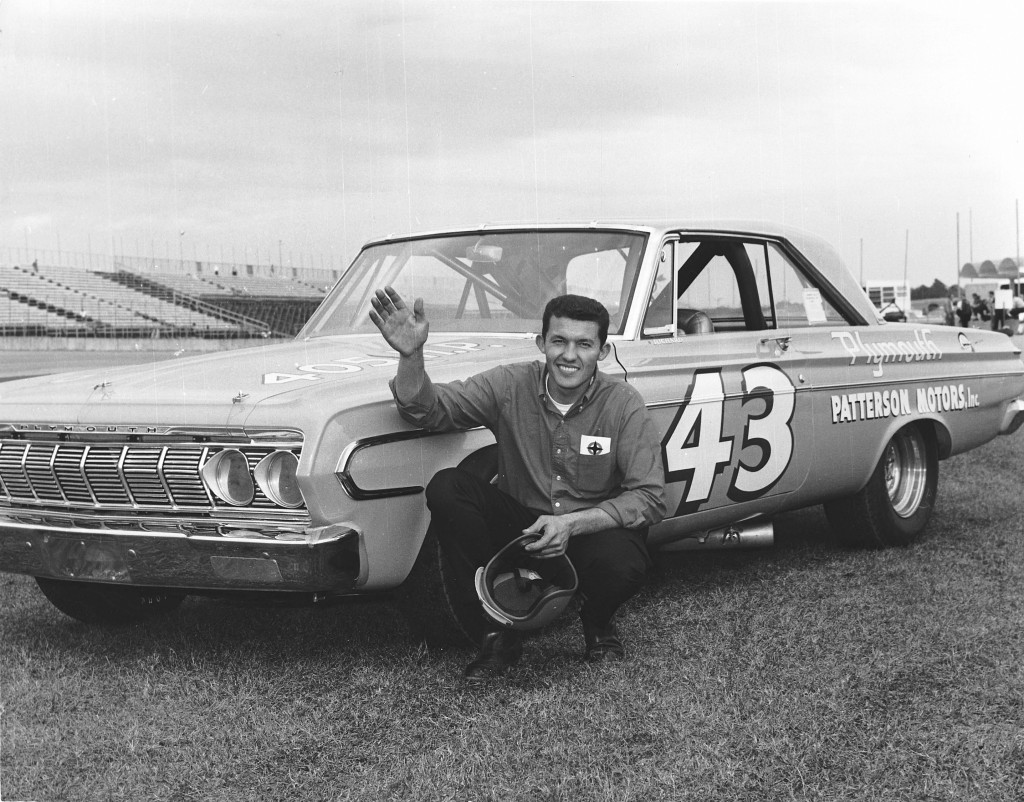
Richard Petty and the 1964 Plymouth with the 426 HEMI engine that won the Daytona 500. Photo courtesy of NASCAR.
Fifty years ago this weekend, two legends were born on the track in Daytona Beach, Fla. A 26-year-old stock car driver named Richard Petty dominated the field to win the sixth running of the Daytona 500. And under the hood of his Plymouth was a brand new race engine, the 426 HEMI.
Petty would win the Daytona 500 six more times in his career. His performance in the 1964 season would cement the prowess of the 426 HEMI racing engine. Mopar is spending this year celebrating the 50th anniversary of this legendary powerplant.
In 1964, Petty started the 200-lap race on the front row. But early in the race he fell to 15th place due to a bungled pit stop. The combination of Petty’s skill and the 426 HEMI’s power enabled him to lead 184 of the race’s 200 laps and setting a new record average speed of 154.334 miles an hour.
How dominant was this new HEMI? The first three cars to finish the 1964 Daytona 500 were Plymouths powered by the 426 HEMI racing engine. Petty took the win with a one-lap-and-9-second lead over second-place driver Jimmy Pardue. Pole sitter, Paul Goldsmith finished third and was another lap behind. Petty went on to finish the NASCAR season as the 1964 NASCAR champion.
The 426 HEMI was originally designed as a pure racing engine – and the same basic design continues to power cars in the National Hot Rod Association drag races today.
Its dominance in stock car racing was so overwhelming that it prompted NASCAR to change its rules, forcing Chrysler to develop a street version of the 426 HEMI before it would be permitted to compete again and causing it to miss the 1965 stock car racing season.
The 426 HEMI race engine was a game-changer in 1964 and the HEMI name still commands respect on drag strips and the street today.
Not bad for a 50-year-old.




